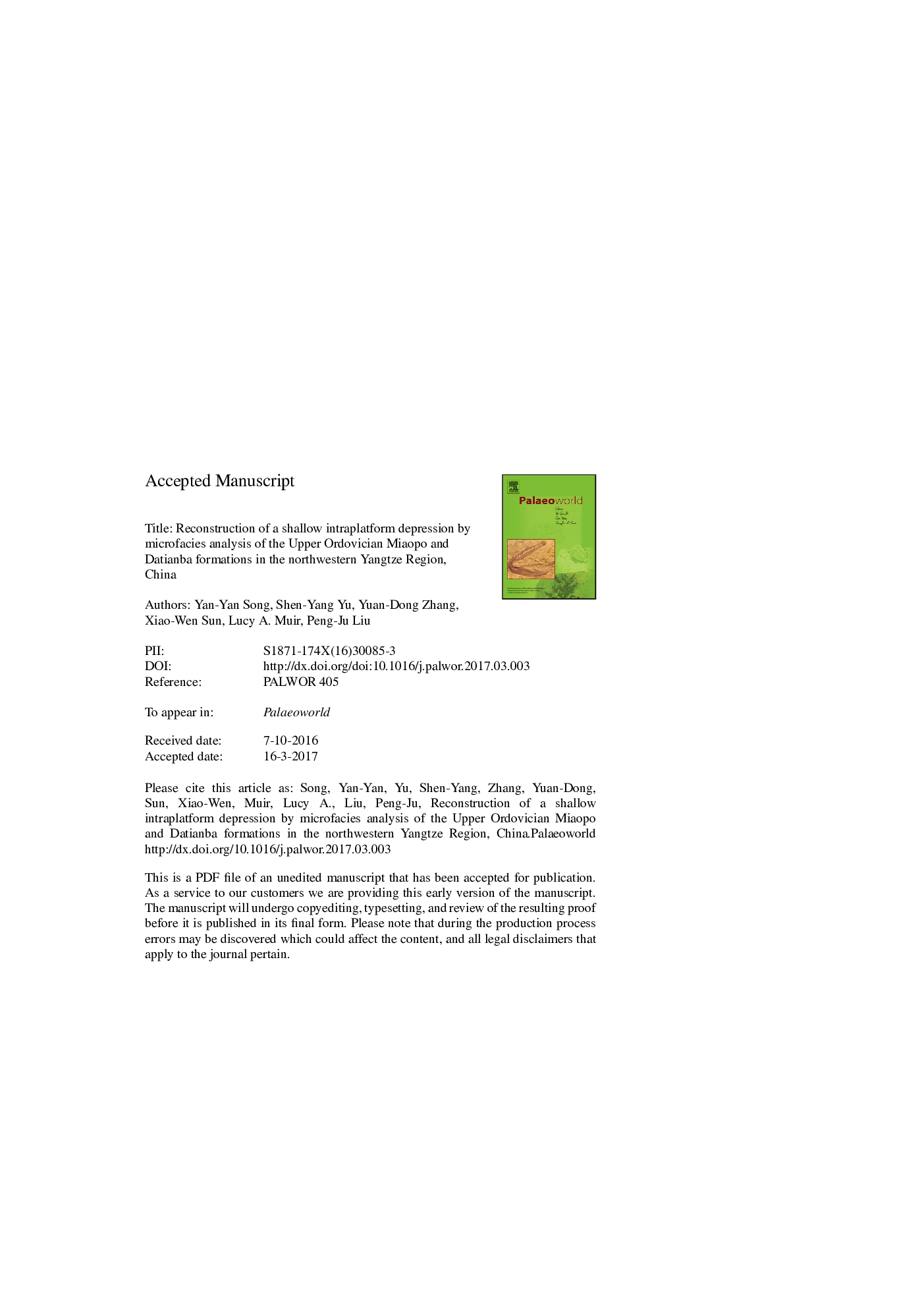| Article ID | Journal | Published Year | Pages | File Type |
|---|---|---|---|---|
| 8916563 | Palaeoworld | 2017 | 28 Pages |
Abstract
The sedimentary environments of the Upper Ordovician (lower Sandbian) shale-dominated Miaopo Formation and the contemporaneous limestone-dominated Datianba Formation in the northwestern Yangtze Platform, China, are reconstructed using facies analysis incorporating microfacies and faunal indicators. These two lithological units are generally only a few meters thick but each spans an interval of the Nemagraptus gracilis Biozone (ca. 3-4 My). Accordingly, they are condensed sequences. The Datianba Formation, which consists of thin-bedded limestones containing a shelly fauna, was formed in a shallow, oxic setting on the outer-shelf. The Miaopo Formation shales are limited to depressions surrounded by the Datianba Formation, indicating the sporadic occurrence of anoxic marine environments on the sea floor. The Miaopo Formation contains a high-diversity, abundant benthic fauna in addition to planktonic graptolites. The presence of tube-shaped burrows within the Miaopo Formation further indicates an oxic sea floor favorable for survival of benthic fauna. These results indicate that during deposition of the two formations the sea floor was mainly oxic. During deposition of the Datianba and Miaopo formations, the sea floor was a relatively gentle ramp without steep slopes. The distinct facies of the Miaopo and Datianba formations are interfingered.
Related Topics
Physical Sciences and Engineering
Earth and Planetary Sciences
Palaeontology
Authors
Yan-Yan Song, Shen-Yang Yu, Yuan-Dong Zhang, Xiao-Wen Sun, Lucy A. Muir, Peng-Ju Liu,
